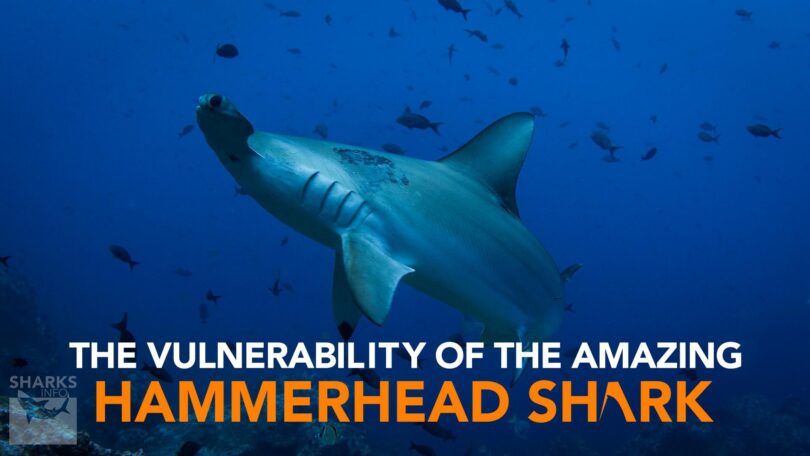The Hammerhead head sharks scientifically known as Sphyrna zygaena, belong to the family Sphyrnidae, which comprises a total of 9 species. These species are named so based on their hammer-like head which looks quite odd but gives them a completely different appearance which is why they can be spotted just at one sight. Let’s study the survival of the Hammerhead sharks in detail.
Are Hammerhead Sharks Vulnerable?
Yes! Hammerhead sharks are greatly vulnerable to overfishing. These species are high in demand among the fisheries for their fins, meat, or skin. Humans are the major threats to the survival of these species because when a shark is caught, its fins are sliced and thrown back into the ocean which ultimately leads to death. According to an estimate, about 90% of the species are targeted or accidental catches. Globally, these species are considered Endangered because of the rapid decline in the population.
Species Profile of Hammerhead Sharks
A total of 9 species are ranked under the title of Hammerhead, these are:
- Eusphyra blochii (Winged head shark)
- Sphyrna gilberti (Carolina hammerhead shark)
- Sphyrna corona (Scalloped bonnethead shark)
- Sphyrna lewini (Scalloped hammerhead shark)
- Sphyrna mokarran (Great hammerhead shark)
- Sphyrnidae (Scoophead shark)
- Sphyrna tiburo (Bonnethead shark)
- Sphyrna zygaena (Smooth hammerhead shark)
- Sphyrna tudes (Smalleye hammerhead shark)
Geological Distribution Of The Hammerhead Shark
These species are widely distributed in the world’s oceans and prefer to live in tropical warm water, especially along the continental selves or shoreline. These species are commonly sighted in the open waters of Central America, Africa, Australia, Asia, and Southern America.
Appearance Of The Hammerhead Shark
The Hammerhead sharks are light greyish to greenish from the top with a white belly, allowing them to blend with the surroundings, especially when approaching the prey. These species have hammer-like heads equipped with eyes located at the end of the heads, providing them a vision of 360 degrees.
The size of the species ranges from 0.9 to 6.0 meters in length and 3 to 580 pounds in weight. However, the largest species can grow to a length of 20 feet and weigh around 1,000 pounds or even more.
Hammerhead Sharks Hunting Strategy
Hammerhead sharks locate their prey by using the electromagnetic sensitive receptors located on the head as well as the eyes, allowing them to hunt the prey easily. The elongated head acts as a hammer and hit the target hard to make them unconscious. The most preferred dietary items of the Hammerhead shark are bony fishes, stingrays, and small sharks. Some member such as Bonnethead sharks also feeds on seagrasses.
How Do Hammerhead Sharks Reproduce?
The Hammerhead sharks reproduce by giving birth to small pups – viviparity. After the incubation period, the Hammerhead shark gives birth to typically 12 to 15 pups however, some species also give birth to 20 to 40 young.
How To Protect Hammerhead Sharks?
The main reason behind the disappearance of Hammerhead sharks from ocean waters is human activities. however, such activities as illegal hunting should be avoided. Further, environmental pollutants and wastes such as plastics are another major threat to them. so by keeping their habitat clean we can protect a massive number of species.
Final Verdict
The hammerhead shark – the name represents that they have a hammer-like head which provides them a 360-degree vision, to locate prey in any direction without turning. These species are highly vulnerable to overfishing, if this practice continues, it may lead to the disappearance of these species from the ocean water.









